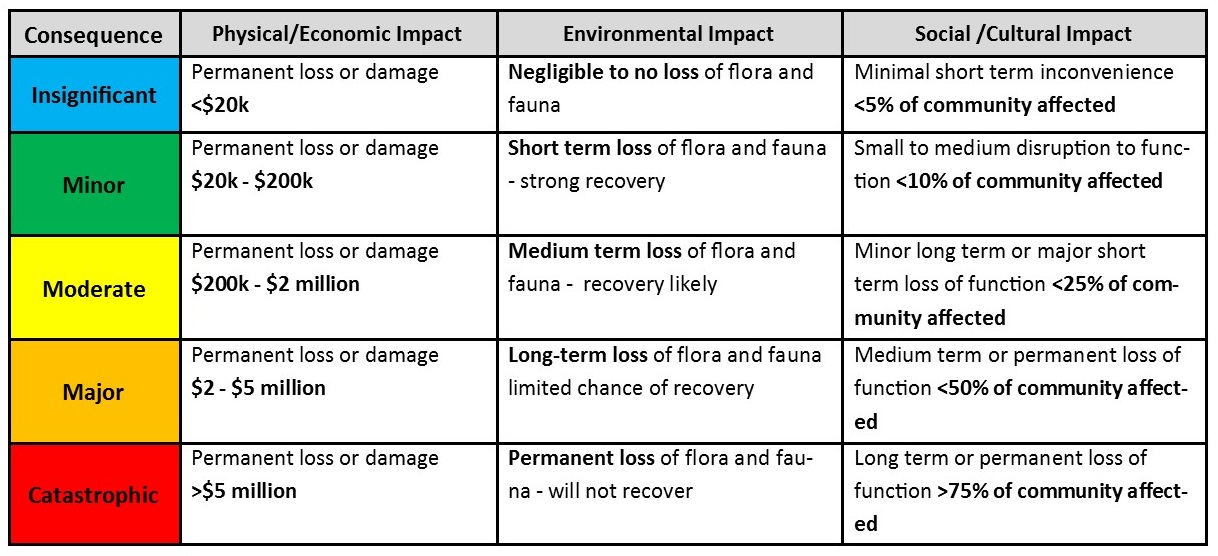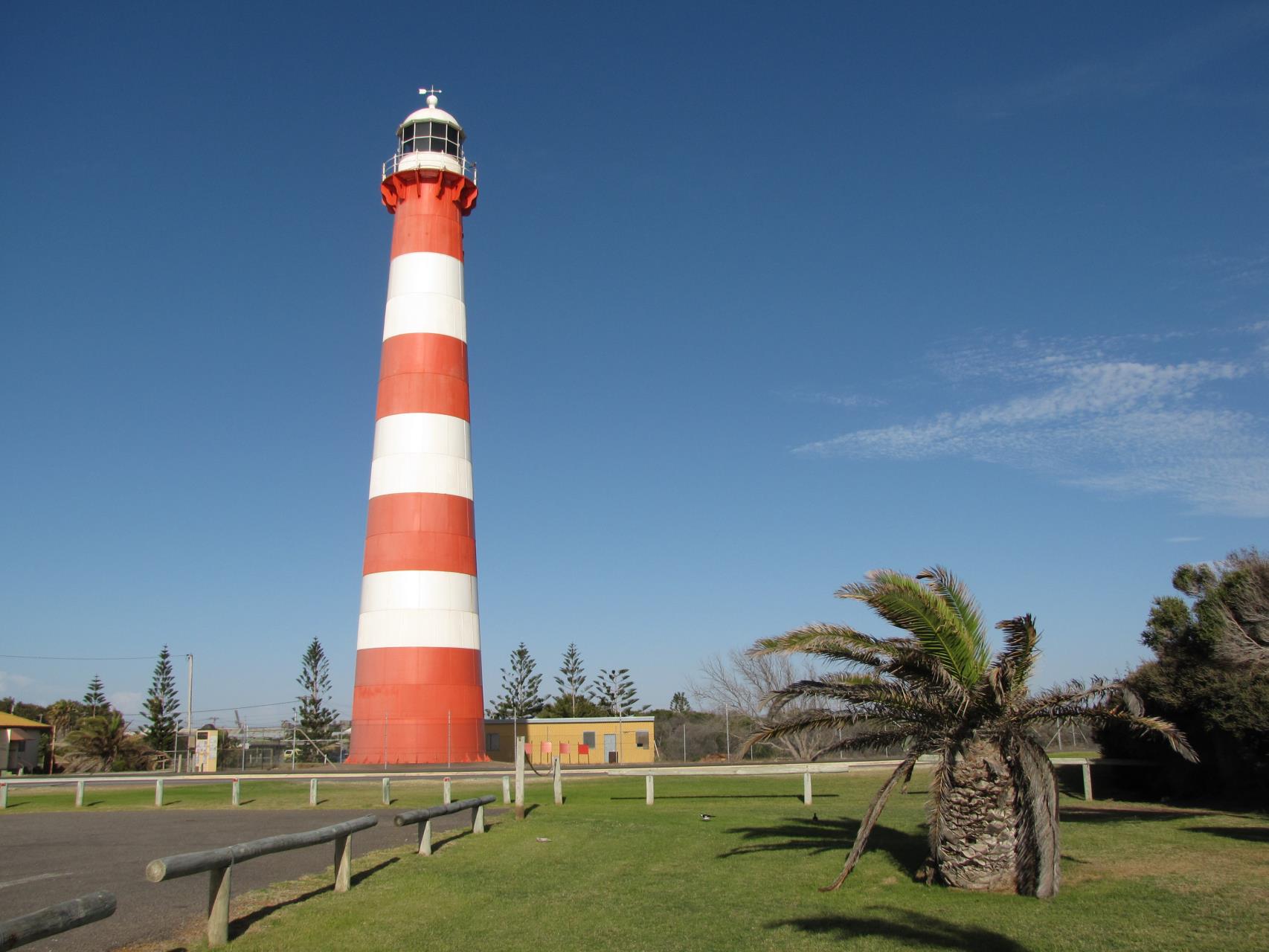The Consequences of Erosion & Inundation
Before we can consider the consequences coastal erosion and inundation would have on assets located close to the shoreline we must first classify assets into five broad categories. Some assets may even be classified in one or more category depending on how it is used. The five classification categories are:
- Physical assets can be roads or a building.
- Economic assets can be utilities or tourism related infrastructure.
- Natural assets can be beaches, sand dunes, wetlands, onshore or near shore plant and animal habitats.
- Social assets can be benches, walk trails or playgrounds.
- Cultural assets can be heritage sites, Aboriginal sites of significance or meeting places.
The impact erosion and inundation would have on an asset could be physical, economic, environmental, social or cultural. The consequence can also range from insignificant to catastrophic. The table below can be used as a guide estimate the consequences of erosion and inundation.

Examples of the Scale of Consequences
The Lighthouse
 |
Social/Cultural Asset
Erosion: Catastrophic
Long term or permanent loss of function >75% of community affected
Loss of heritage building
Inundation: Insignificant
Minimal short term inconvenience <5% of community affected |
Physical/Economic Asset
Erosion: Major
Permanent loss or damage $2 - $5 million
Inundation: Minor
Permanent loss or damage $20k - $200k
Loss of tourist attraction |
Foreshore Reserve and Beach
 |
Environmental Asset
Erosion: Catastrophic
Permanent loss of flora and fauna - will not recover
Inundation: Minor
Short term loss of flora and fauna - strong recovery |
Social Asset
Erosion: Catastrophic
Long term or permanent loss of function >75% of community affected. Loss of recreation space
Inundation: Insignificant
Minimal short term inconvenience <5% of community affected |